#beatus
Text

Beatus de Liebana, Daniel and the Angel, ca. 1100
17 notes
·
View notes
Text

1 note
·
View note
Text

985 notes
·
View notes
Photo

Had a few REAL beautiful moments this weekend working #beatusII in the studio with @chico_theengineer Our mothers prayers FIT where they needed to - and it felt spiritually moving! Slowly noticing how EVERYTHING comes together 😂😂 **Album drops Oct 27** It is really about #family Swipe left >>>> for what’s coming! #hallowhiskey got the agg legends showing out Oct 15th 🙏🏿🙏🏿 the bill speaks for itself Our first LEGIT Dallas show - we on the bill @ruinsdeepellum Oct 28th Album art by @thirstandcompany #SYLA #new #album #beatus #blessing #beatification #beatitude #trap #nigeria #mexico #prayers #music https://www.instagram.com/p/Cjf0iKhOAd_/?igshid=NGJjMDIxMWI=
#beatusii#family#hallowhiskey#syla#new#album#beatus#blessing#beatification#beatitude#trap#nigeria#mexico#prayers#music
0 notes
Photo

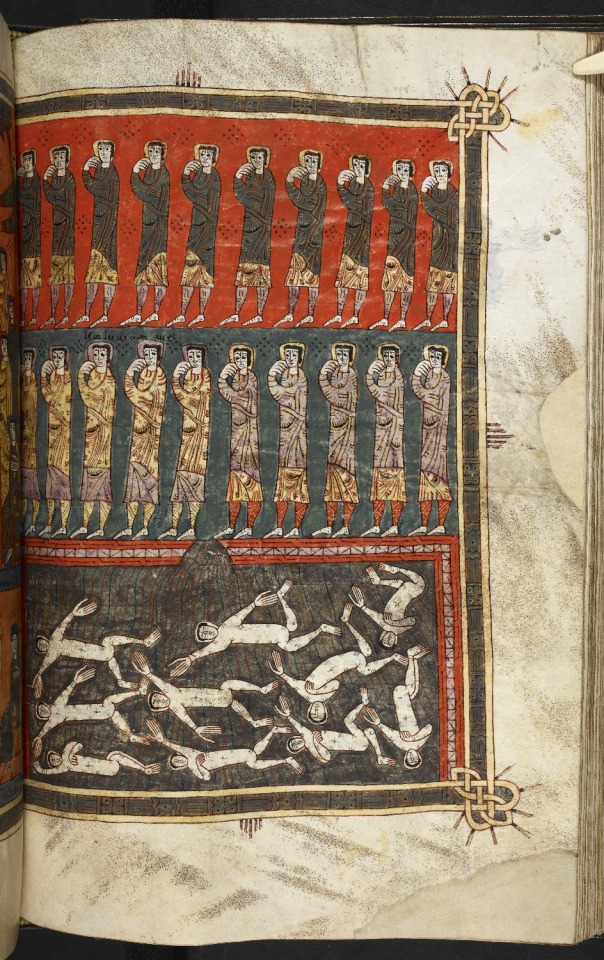
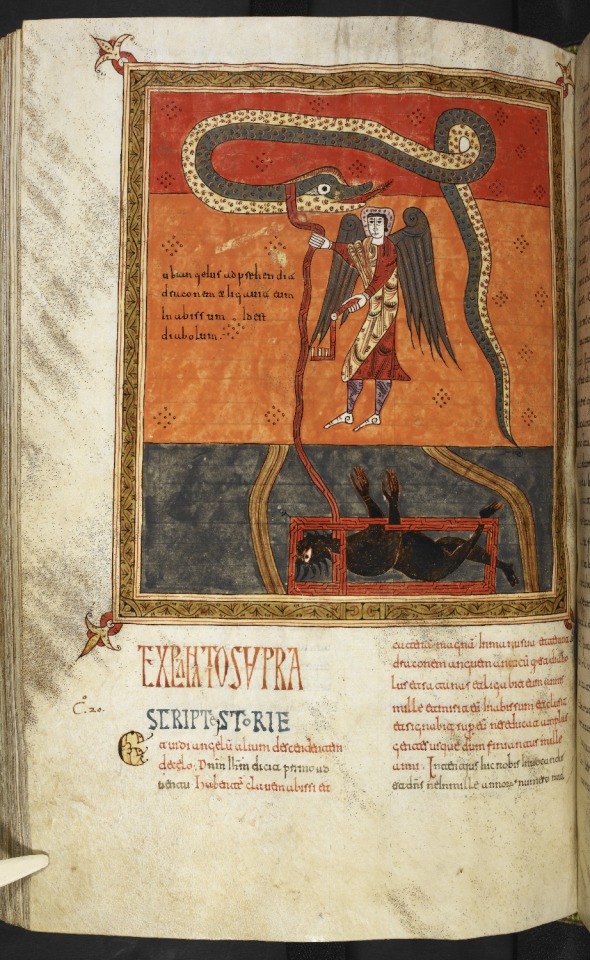



Beatus of Liébana, Commentary on the Apocalypse, Northern Spain, end of 10th century
Pages depicting the Last Judgement (top), the angel enchaining Satan (Revelation 20:1-3, middle left), angels restraining the four winds (Revelation 7:1-3, middle right), and the 144,000 chosen from the twelve tribes of Israel (Revelation 7:4-12, bottom)
British Library Catalogue of Illuminated Manuscripts (Additional 11695)
3K notes
·
View notes
Text


180 notes
·
View notes
Photo

Customer: WILL BEAT YOU
DMV: will beat you
Verdict: DENIED
#California license plate with text WL BEATU#bot#ca-dmv-bot#california#dmv#funny#government#lol#public records
1K notes
·
View notes
Text

Today, May 9th, is the feast day of Saint Beatus of Lungern. He was an English recluse who was sent by god to convert the people of what would later become Switzerland to christianity.
According to legend, there was once a pagan cult that sacrificed to their gods in a cave. When the priests stopped doing this, a dragon moved into the cave. Nobody dared to go near the cave, but when Beatus arrived in the region, he went inside and used his cross to chase the dragon out and into a lake, which began to boil immediately. As proof for the dragons death, Beatus moved into the cave himself.
61 notes
·
View notes
Text


mappa mundi
from the "rylands beatus", a copy of beatus of liébana's 8th c. commentary on the apocalypse of st john, spain, late 12th or early 13th c.
source: Manchester, John Rylands Library, Latin MS 8, fol. 43v-44r
#12th century#13th century#mappa mundi#maps#rylands beatus#beatus of liébana#apocalypse#adam and eve#medieval maps#medieval art
113 notes
·
View notes
Text
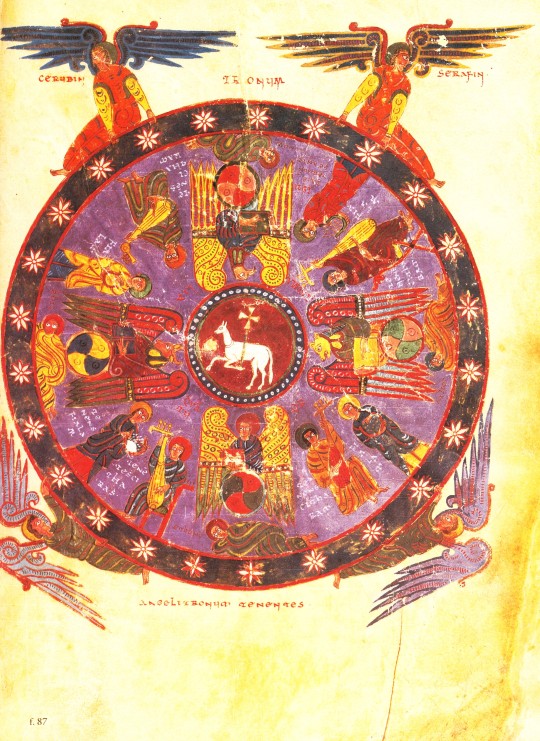

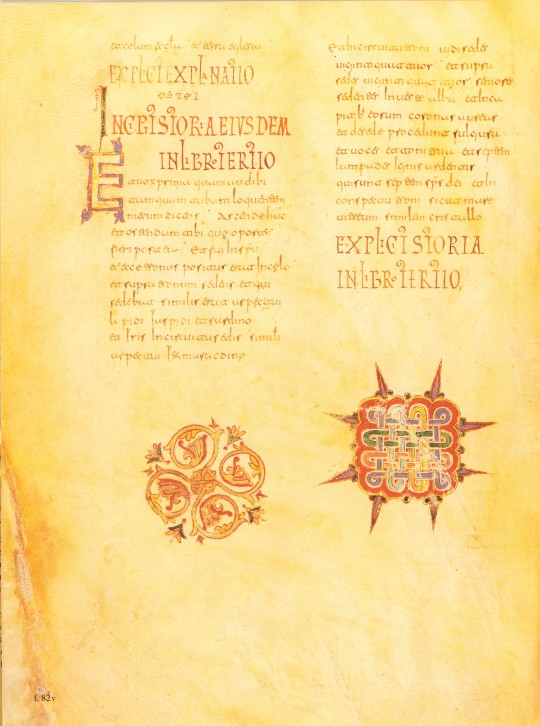
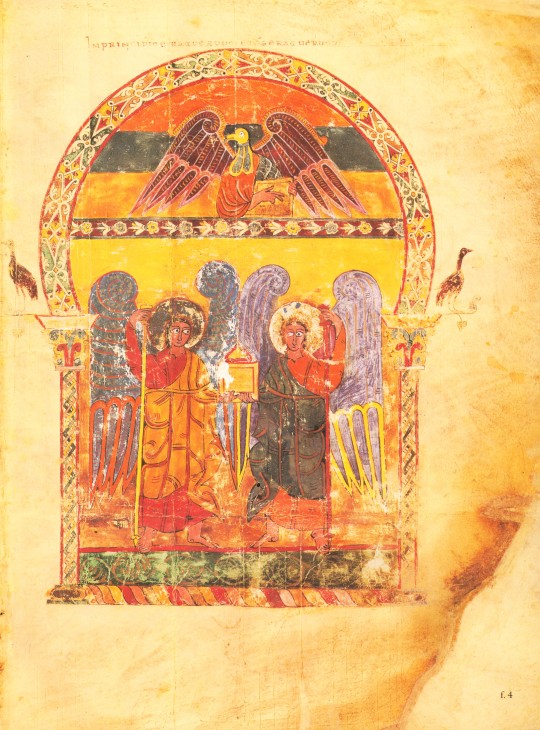




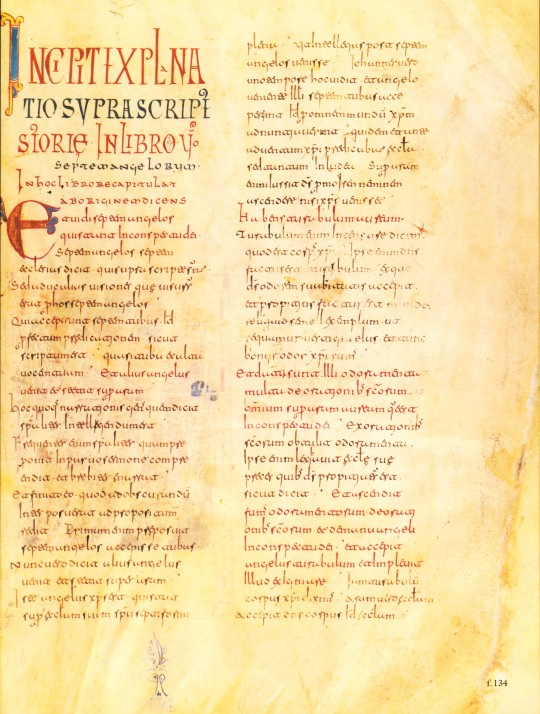
Welcome to Manuscript Monday!
In this series we will periodically focus on selections from our manuscript facsimile collection. Today we present selections from the Morgan Beatus Manuscript, reproduced as A Spanish Apocalypse, The Morgan Beatus Manuscript in New York by George Braziller, Inc. in association with the Pierpont Morgan Library in 1991. The original manuscript, made around 10th century CE at the scriptorium of San Miguel de Escalada in Spain by a monk named Maius, is the earliest surviving illuminated version of the monk Beatus of Liébana's commentary on the biblical Book of Apocalypse (also known as the Book of Revelation). The text of the Book of Revelation makes up the first part of the manuscript, and Beatus’s commentary comprises the second part. The Book of Revelation tells of the end-times in Christianity, during the final judgement of humanity by God. The story within this Biblical book was also seen by those living during the Latin medieval era as representative of the beginning of something new: God’s celestial kingdom. Due to this view of the book, many artists incorporated imagery from this part of the Bible in their work.
Produced in Al-Andalus, or Muslim-ruled Spain, the artistic style of this work combines both Muslim and Christian visual traditions to create a beautifully illuminated manuscript that supplements the commentary by the monk. This artistic style is known as the Mozarabic, which comes from the Arabic mustaʿrib, meaning ‘Arabicized’. Interestingly, this style of art can only be seen in Christian religious art and architecture from Spain at the time, as non-religious artistic objects made by Christians look so similar to Islamic versions of the same works that they cannot be identified as intentionally Christian. Some key Islamic artistic elements within the manuscript include buildings with horseshoe arches, intricate geometric and vegetal patterns as borders for larger images, and the large, bulging eyes of the illustrated animals.
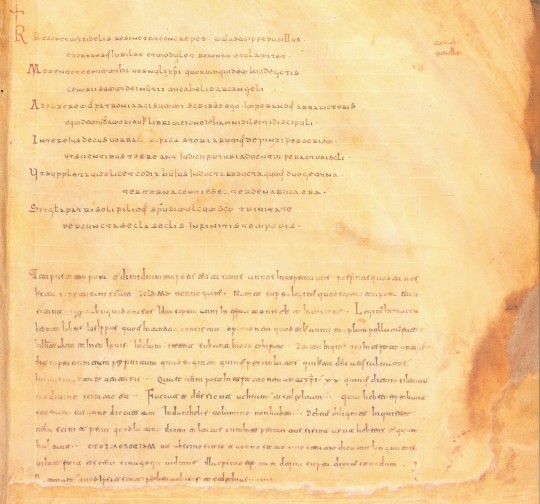
Another interesting aspect of this specific manuscript is the colophon at the end of the manuscript. It tells readers about the circumstances surrounding the creation of this book, including the maker, the patron, the year it was made, and an explanation about why Maius created the manuscript ("I write this . . . at the command of Abbot Victor, out of love for the book of the vision of John the beloved disciple. As part of its adornment I have painted a series of pictures . . . so that the wise may fear the coming of the future judgement of the world's end."). Colophons in medieval manuscripts are not usually as detailed, so the inclusion of all this information contributes greatly to the knowledge and history surrounding the Morgan Beatus Manuscript.
View more Manuscript Monday posts.
– Sarah S., Special Collections Graduate Intern
#manuscript monday#manuscripts#morgan library#morgan beatus manuscript#Beatus of Liébana#Spain#Christian art#Mozarabic#Islamic art style#facsimilies#Spanish art#Medieval art#Spanish medieval art#A Spanish Apocalypse#George Braziller#illuminated manuscripts#Sarah S.
138 notes
·
View notes
Text

[ID: a collection of stick figures being violent and bloody. in the center of these images is text that reads "girls when they lament and weep, but no one has consoled them." End ID]
13 notes
·
View notes
Text

Beatus de Liebana, The worship of the golden idol, ca. 1100
8 notes
·
View notes
Text
Vues sur l'Apocalypse
2361. Beatus de Saint-Sever, (Charlotte Denoël)
((Charlotte Denoël), Beatus de Saint-Sever, ~1060) (Bibliothèque nationale, Citadelles et Mazenod,2022)
⌘ BnF
⌘ Beatus Wiki
7 notes
·
View notes
Photo

Beatus of Liébana, illustration from “Commentaria in Apocalypsin” ("Commentary on the Apocalypse”, in the Saint-Sever Beatus), Saint-Sever Abbey, Duchy of Gascony (today France), 1028-1072
BnF, Latin 8878, fol. 261
95 notes
·
View notes
Text

Leaf from a Beatus Manuscript: the Lamb at the Foot of the Cross, Flanked by Two Angels; The Calling of Saint John with the Enthroned Christ flanked by Angels and a Man Holding a Book (Spain, c 1180 CE). Illustrated Beatus manuscripts bring to life an extraordinary vision of the end of the world, as recorded by Saint John in the Apocalypse (Book of Revelation) and filtered through the lens of Beatus of Liébana, an eighth-century Asturian monk. These manuscripts are unique to medieval Spain and a testament to the artistry and intellectual milieu of monastic culture there. The leaf shown here comes from a manuscript that was disassembled in the 1870s.
This frontispiece image depicts a lamb (an image commonly associated with Christ) tormented by the spear and sponge used against Christ during the Passion. The alpha and omega symbols hanging from the cross refer to a passage from the Apocalypse: "Ἐγώ εἰμι τὸ Ἄλφα καὶ τὸ Ὦ, λέγει κύριος, ὁ θεός, ὁ ὢν καὶ ὁ ἦν καὶ ὁ ἐρχόμενος, ὁ παντοκράτωρ." (that is: "I am Alpha and Omega, the beginning and the end, saith the Lord God, who is, and who was, and who is to come, the Almighty") (Apoc. 1:8)
[Robert Scott Horton]
* * * * *
“To hear is to let the sound wander all the way through the labyrinth of your ear; to listen is to travel the other way to meet it. It’s not passive but active, this listening. It’s as though you retell each story, translate it into the language particular to you, fit it into your cosmology so you can understand and respond, and thereby it becomes part of you. To empathize is to reach out to meet the data that comes through the labyrinths of the senses, to embrace it and incorporate it. To enter into, we say, as though another person’s life was also a place you could travel to.”
― Rebecca Solnit, The Faraway Nearby
[via "alive on all channels"]
#Easter#the cross#Lamb#Beatus Manuscript#angels#apocalypse#eighth century#religious art#Rebecca Solnit#quotes#Alive on All Channels#The Faraway Nearby
7 notes
·
View notes
